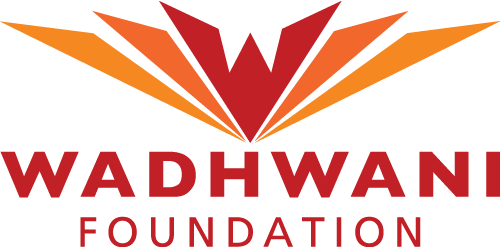As nations strive to build Generative AI (GenAI) and Large Language Models (LLMs), India finds itself at a critical juncture. There is a growing desire to create homegrown foundational LLMs. We believe these ambitions must be tempered with realism and strategic thinking. In a landscape dominated by billion-dollar investments for billion-parameter models, India must carefully assess where it can lead, where it should collaborate, and where it should simply enable.
The current global flux in foundational model development, rapid innovation cycles, and enormous capital requirements suggests that building such models from scratch should not be the Indian government’s focus, at least not using public funds. Instead, the emphasis must shift towards leveraging open-source LLMs, enabling local language access, and supporting private innovation.
Foundational Models: High Cost, Uncertain Returns
Building a cutting-edge foundational LLM today is akin to funding a moonshot project. Models like GPT-4 and Gemini require thousands of GPUs, massive datasets, elite talent, and deep pockets. These models evolve quickly, with frequent breakthroughs making older versions “also-rans” in a matter of months.
For a developing economy like India, public investment must prioritise scalable, inclusive outcomes. Deploying taxpayer money on speculative foundational models is risky, with no guaranteed benefit. It is more prudent to focus on applied innovation and public good infrastructure than to compete in an arms race dominated by tech giants.
BharatGen and the Param 1 Model: A Balanced Step Forward
One notable effort within India is the BharatGen consortium, a collaboration of premier academic institutions—IIT Bombay, IIT Kanpur, IIT Mandi, IIT Madras, IIT Hyderabad, IIIT Hyderabad, and IIM Indore. This consortium recently launched Param 1, a 2.9 billion parameter bilingual LLM that is now publicly available through MeitY’s AIKosha platform.
What sets Param 1 apart is its 25% Indic language data composition, a significant jump from the 0.01% in international models like Meta’s LLaMA. The model serves not as a moonshot but as an enabler—a foundational checkpoint that Indian developers can fine-tune to build domain-specific AI tools such as Indic chatbots, copilots, and knowledge systems.
Importantly, BharatGen has also developed 20 speech models across 19 Indian languages, including Speaker Adaptive and Voicebox TTS systems. These were built from scratch to address India’s unique speech needs, showcasing that focused, purposeful investment in enabling infrastructure yields better outcomes than attempting to replicate global foundational models.
This effort reflects an ideal model for public sector participation—not to compete globally, but to strengthen local capacity and reduce dependency on foreign datasets and technologies.
Sarvam AI: Government-Backed Sovereign LLM Initiative
In a significant move under the ₹10,000 crore IndiaAI Mission, the Government of India has selected Bengaluru-based startup Sarvam AI to develop the country’s first sovereign LLM. Sarvam AI will receive access to 4,096 Nvidia H100 GPUs for six months to train a 70-billion-parameter model from scratch. This model aims to excel in reasoning, voice-based tasks, and fluency across Indian languages, given the founder’s background with AI4Bharat.
Global Examples: Use What Exists, Build What’s Missing
Countries like France (Mistral), the UAE (Falcon), and institutions like Meta (LLaMA 2) offer a valuable roadmap. These high-performing open-source LLMs can be adapted, localised, and combined using ensemble or Mixture of Experts (MoE) approaches to deliver competitive results without the massive cost.
India should adopt this pragmatic approach—use open models, customise them with Indian datasets, and fine-tune for local governance, agriculture, education, and law. This not only saves resources but also accelerates deployment.
India’s Real Opportunity: Local Languages and Voice Interfaces
India must lead the global south in building AI that truly helps all strata of society. The focus should be on reach and equity rather than model size. We note three major areas that will have the most impact:
Local Language LLMs:
Support startups creating models that prioritise Indian 22 scheduled languages. These efforts are more aligned to help reach India’s linguistically diverse population than English-first models. Local language understanding is the foundation for digital inclusion.
Voice Interfaces for the Masses:
A large segment of Indians remains digitally excluded due to low literacy, low smartphone penetration, and a lack of comfort with English language keyboards. For these citizens, voice in their local language is the most natural interface. High-quality speech-to-text and text-to-speech models that support regional dialects are crucial. They can power IVR bots, AI assistants, and low-bandwidth services.
Multimodal Systems:
AI systems that combine a variety of inputs, including text, speech, and images, will help with wider reach. For instance, farmers may take photos of crops and get voice-based responses in Telugu or Odia; elderly citizens can speak to a pension query system in Marathi or Tamil. Such systems require deployment-first thinking, focusing on the end user’s needs.
The Government’s Role: Infrastructure, Not Invention
Rather than becoming a builder of billion-parameter models, the Indian government should focus on:
Open Datasets: Release large-scale public datasets for Indian languages, health, agriculture, and governance to allow startups and researchers to fine-tune existing models.
AI Infrastructure as a Public Good: Provide access to compute (GPUs/TPUs), storage, and model hubs through government-supported platforms like AIKosha.
Policy and Regulatory Enablement: Encourage responsible experimentation, offer sandbox environments, and fund pilot deployments in rural and semi-urban regions.
Private Sector Empowerment: Let startups and industry take bold risks in foundational model development while the government ensures that regulatory and infrastructural support is in place.
Conclusion: India’s LLM Success Will Come From Enabling, Not Building
India must avoid falling into the trap of vanity-driven AI nationalism. Our competitive advantage lies not in size, but in customisation, inclusivity, and deployment at scale.
We do not need to build the next GPT. We need to ensure that LLMs speak Indian languages, understand Indian contexts, and serve Indian citizens, from remote villages to urban centres.
With enabling policy, open access to global and indigenous models, and a relentless focus on local value, India can lead the world in applied AI. The BharatGen initiative, Sarvam AI’s Indic focus, and growing open-source ecosystems.
Online Source:
Express Computer



